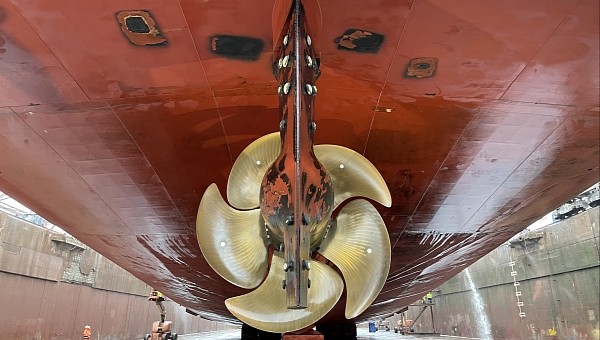Certain passenger transportation operators are starting to claim that customers are the ones pushing for eco-friendly changes, regardless of the potential discomfort they might bring. Whether that’s actually true, or just a marketing strategy, only time will tell. Meanwhile, passengers traveling by ferry from Germany to Denmark have to pay the price of a longer trip, for the satisfaction of fewer emissions.
You would think that waiting for new-generation ferries to be completed soon is enough to feel that you’re fulfilling your eco-friendly duties. But it’s not enough for Scandlines, a ferry transportation company on German-Danish routes. Apparently, it couldn’t wait until next year, when the new zero-emissions boats are set to enter service, and had to make some changes to its current fleet.
This fleet isn’t too old either. It consists of two ferries with hybrid propulsion, which were introduced in 2016. According to Scandlines, they had been specifically adapted for the Rostock (Germany)-Gedser (Denmark) route. This meant that they were equipped with three engines – two on the center propeller, and a third one for the thrusters and hotel load (the ship’s total electric load, apart from propulsion). This system was enough for the ferries to travel at 20 knots (23 mph/37 kph).
But the operator decided to make some changes, while the new vessels that will replace the current ones are being built. To make its ferries even greener, it decided to reduce the overall speed to about 16 knots (18.4 mph/29.6 kph). This would mean that only one of the two engines on the center propeller is needed. On the other hand, since the vessel wasn’t designed to function like that, the one engine would lack the required torque, which then impacts the propeller’s efficiency.
In response to this "dilemma," Scandlines has modified the propeller itself, which had a diameter of 4.6 meters (15 feet). The large blades were replaced with smaller blades, which reduced the diameter to 4.2 meters (13.7 feet), each blade weighing a little over 1 kg (around 2.6 lbs).
This modification was enough to reduce energy consumption (and therefore cut CO2 emissions) by 11%, according to Scandlines. At this reduced speed, the Rostock ferries now take two hours to complete their regular route. The cars being transported onboard won’t mind, but the passengers might. Or not, if they are true supporters of the net-zero carbon goal.
This is still just a temporary solution, because in two years Scandlines plans to replace its fleet with the new-generation ferries currently under construction, which would operate at the same speed, but with zero emissions. Designed to operate either in hybrid mode, or with zero emissions, they claim to become the world’s largest electric double-ended ferries, when they’ll be ready to enter service.
This fleet isn’t too old either. It consists of two ferries with hybrid propulsion, which were introduced in 2016. According to Scandlines, they had been specifically adapted for the Rostock (Germany)-Gedser (Denmark) route. This meant that they were equipped with three engines – two on the center propeller, and a third one for the thrusters and hotel load (the ship’s total electric load, apart from propulsion). This system was enough for the ferries to travel at 20 knots (23 mph/37 kph).
But the operator decided to make some changes, while the new vessels that will replace the current ones are being built. To make its ferries even greener, it decided to reduce the overall speed to about 16 knots (18.4 mph/29.6 kph). This would mean that only one of the two engines on the center propeller is needed. On the other hand, since the vessel wasn’t designed to function like that, the one engine would lack the required torque, which then impacts the propeller’s efficiency.
In response to this "dilemma," Scandlines has modified the propeller itself, which had a diameter of 4.6 meters (15 feet). The large blades were replaced with smaller blades, which reduced the diameter to 4.2 meters (13.7 feet), each blade weighing a little over 1 kg (around 2.6 lbs).
This modification was enough to reduce energy consumption (and therefore cut CO2 emissions) by 11%, according to Scandlines. At this reduced speed, the Rostock ferries now take two hours to complete their regular route. The cars being transported onboard won’t mind, but the passengers might. Or not, if they are true supporters of the net-zero carbon goal.
This is still just a temporary solution, because in two years Scandlines plans to replace its fleet with the new-generation ferries currently under construction, which would operate at the same speed, but with zero emissions. Designed to operate either in hybrid mode, or with zero emissions, they claim to become the world’s largest electric double-ended ferries, when they’ll be ready to enter service.







